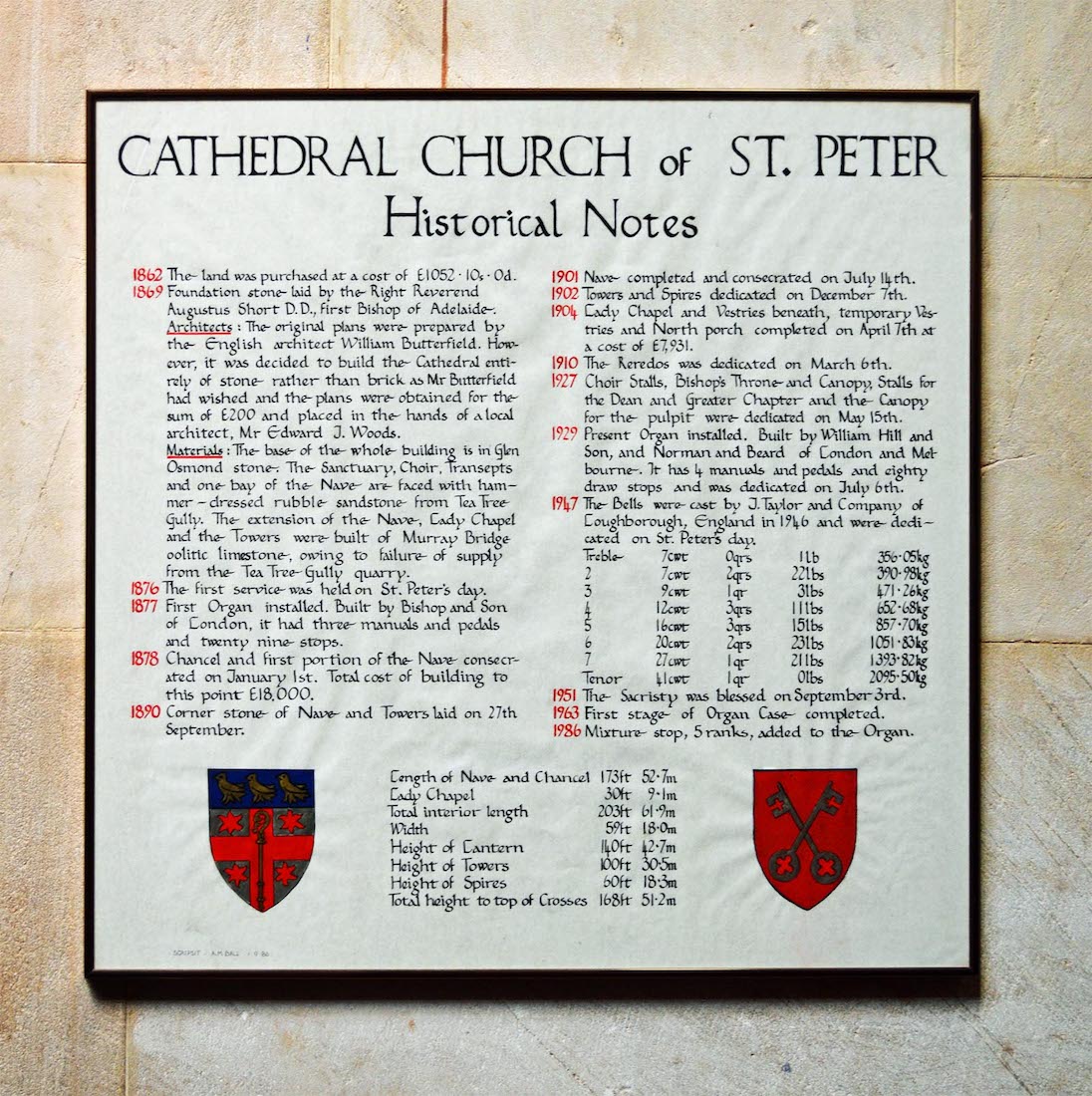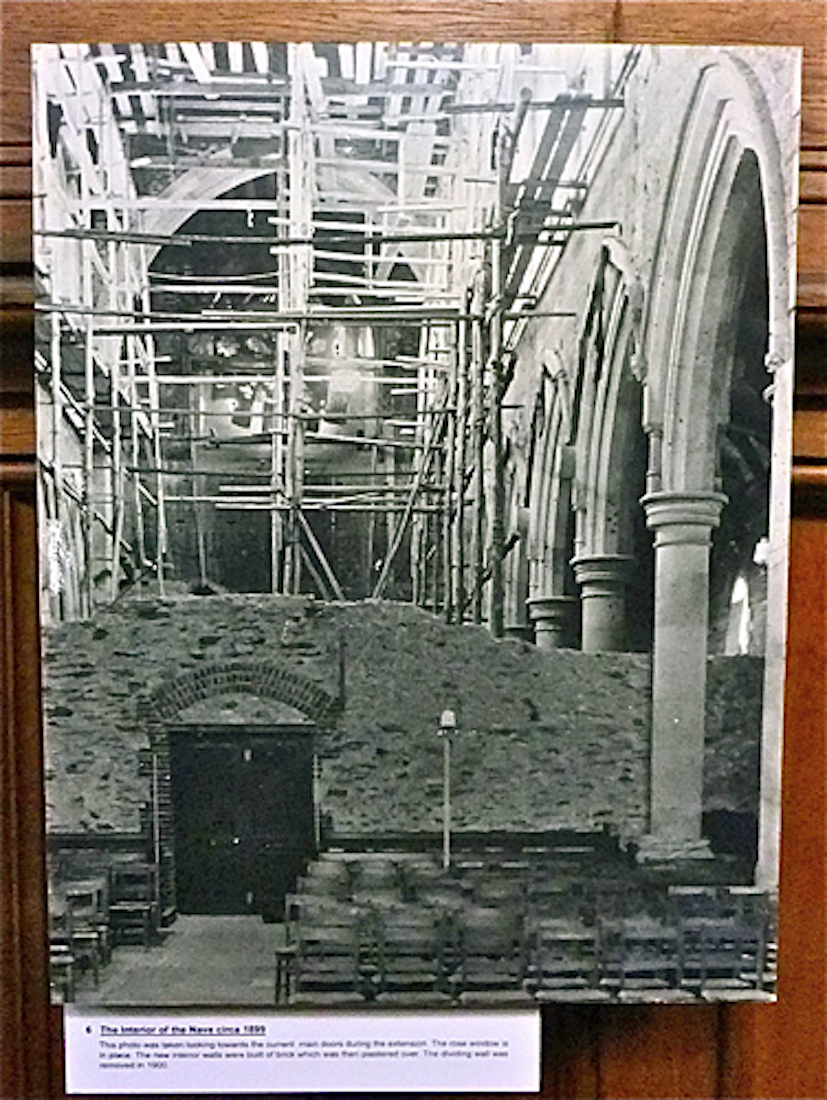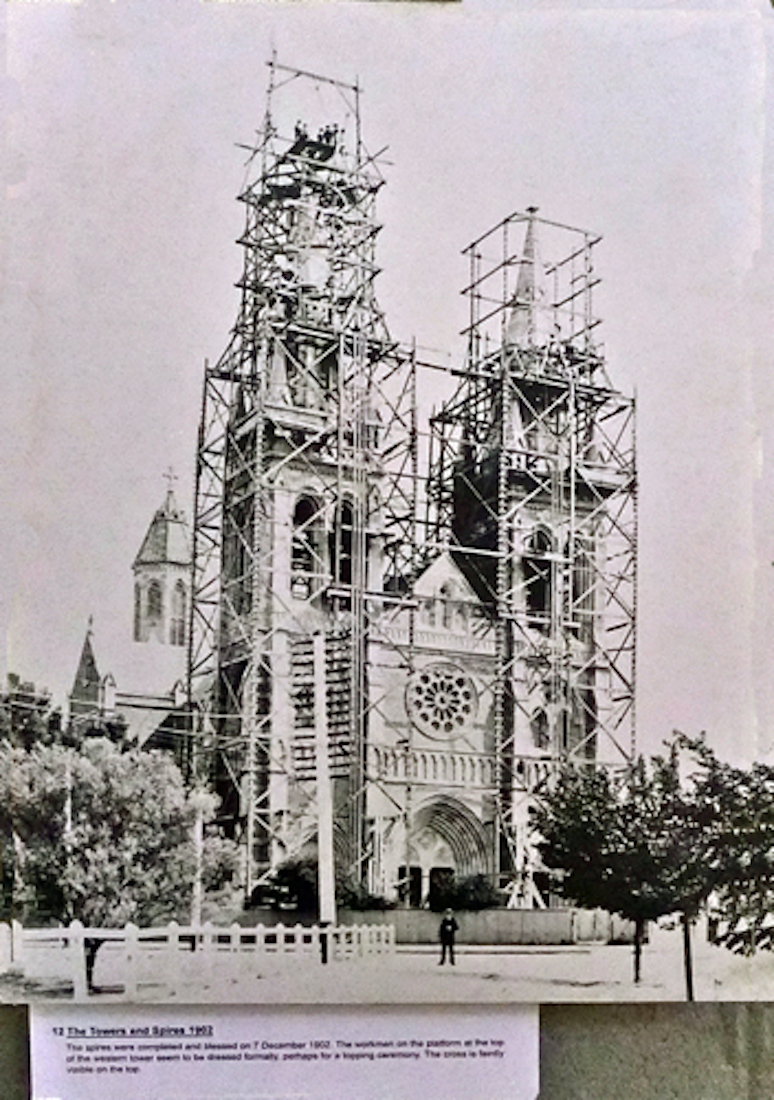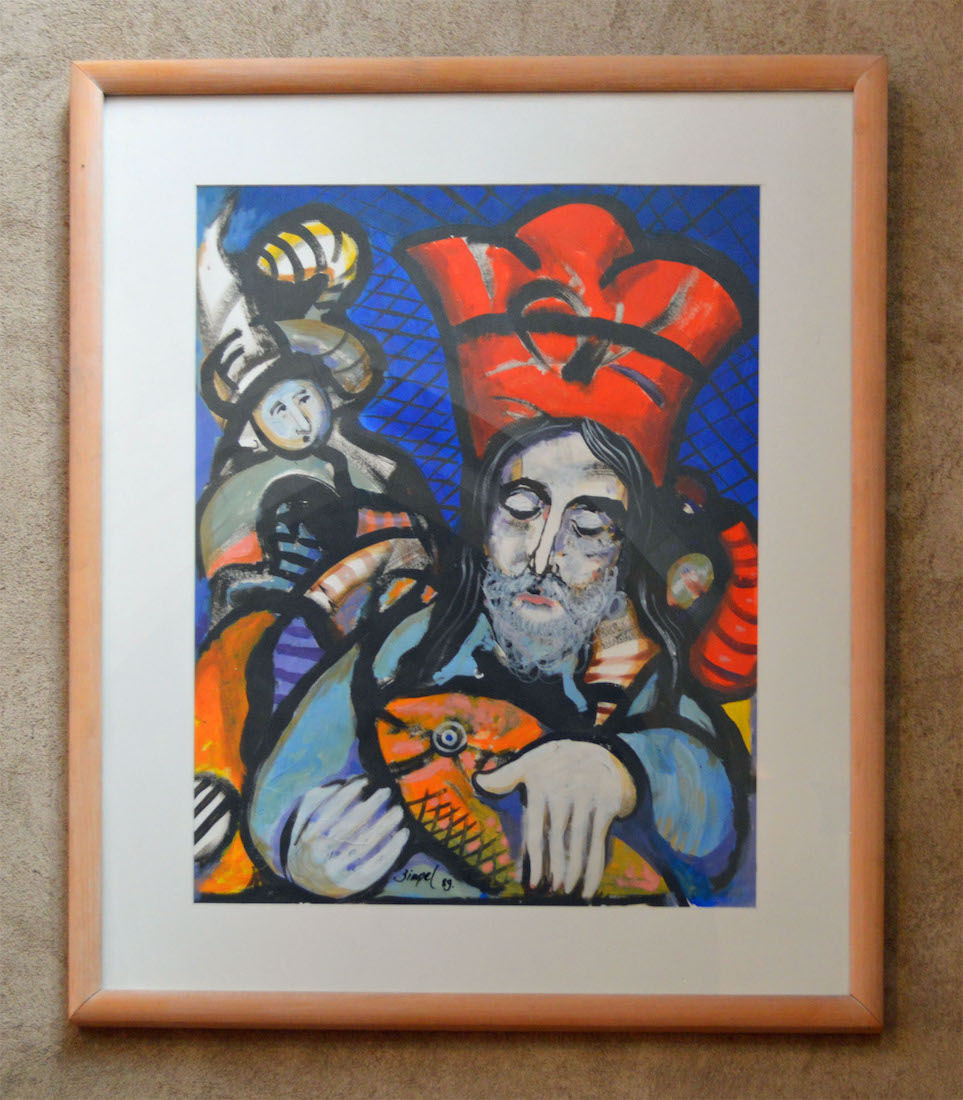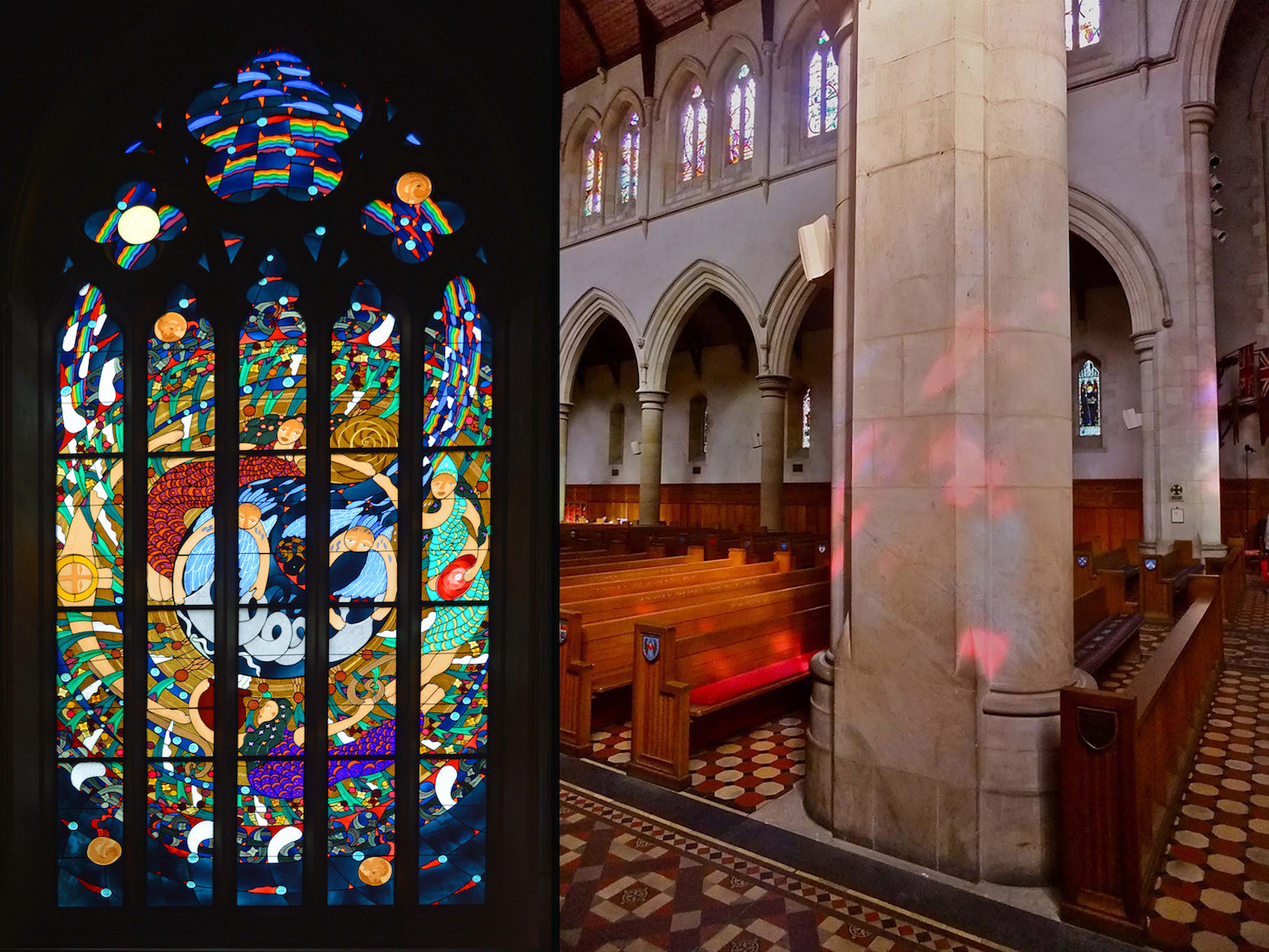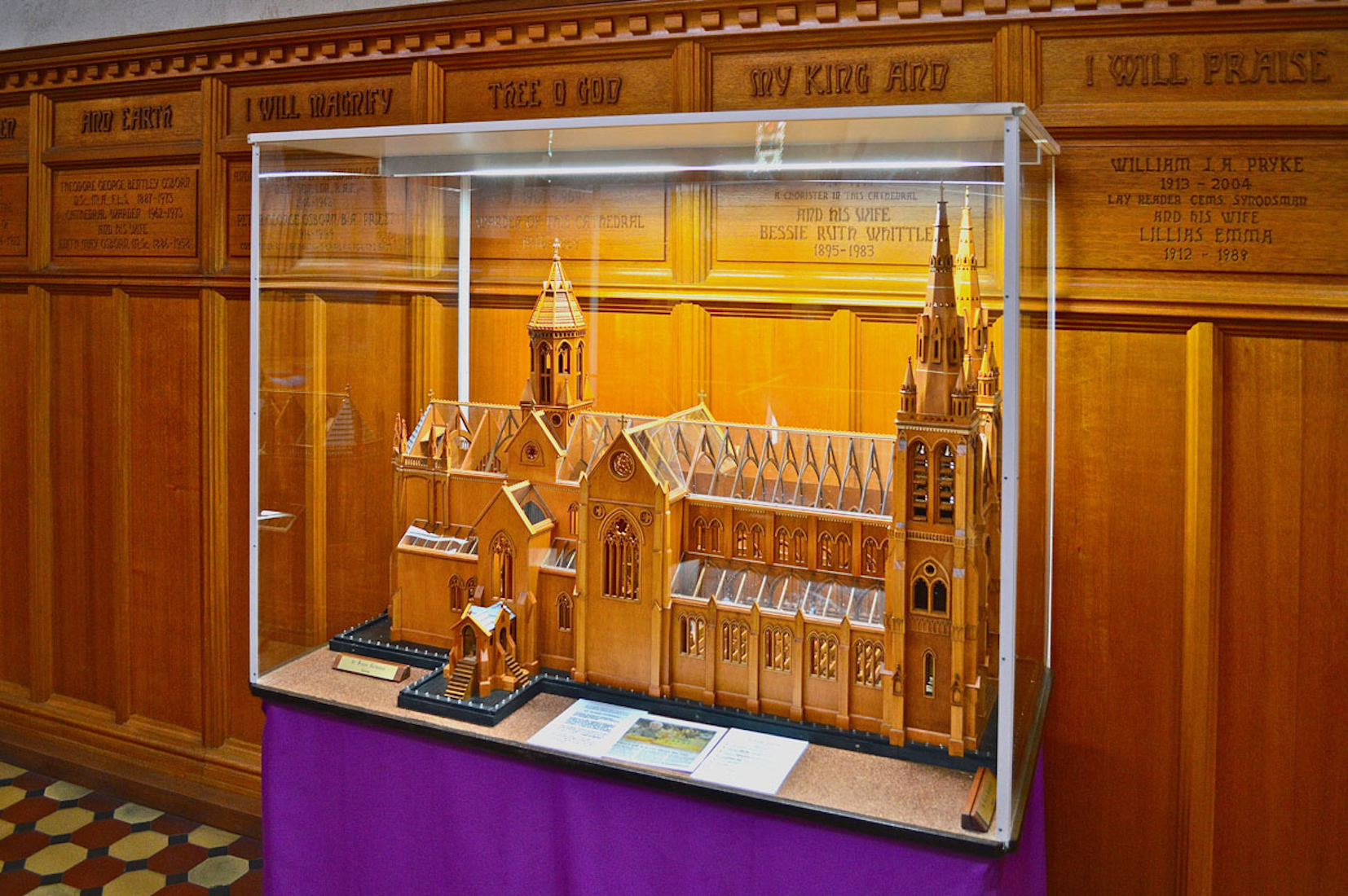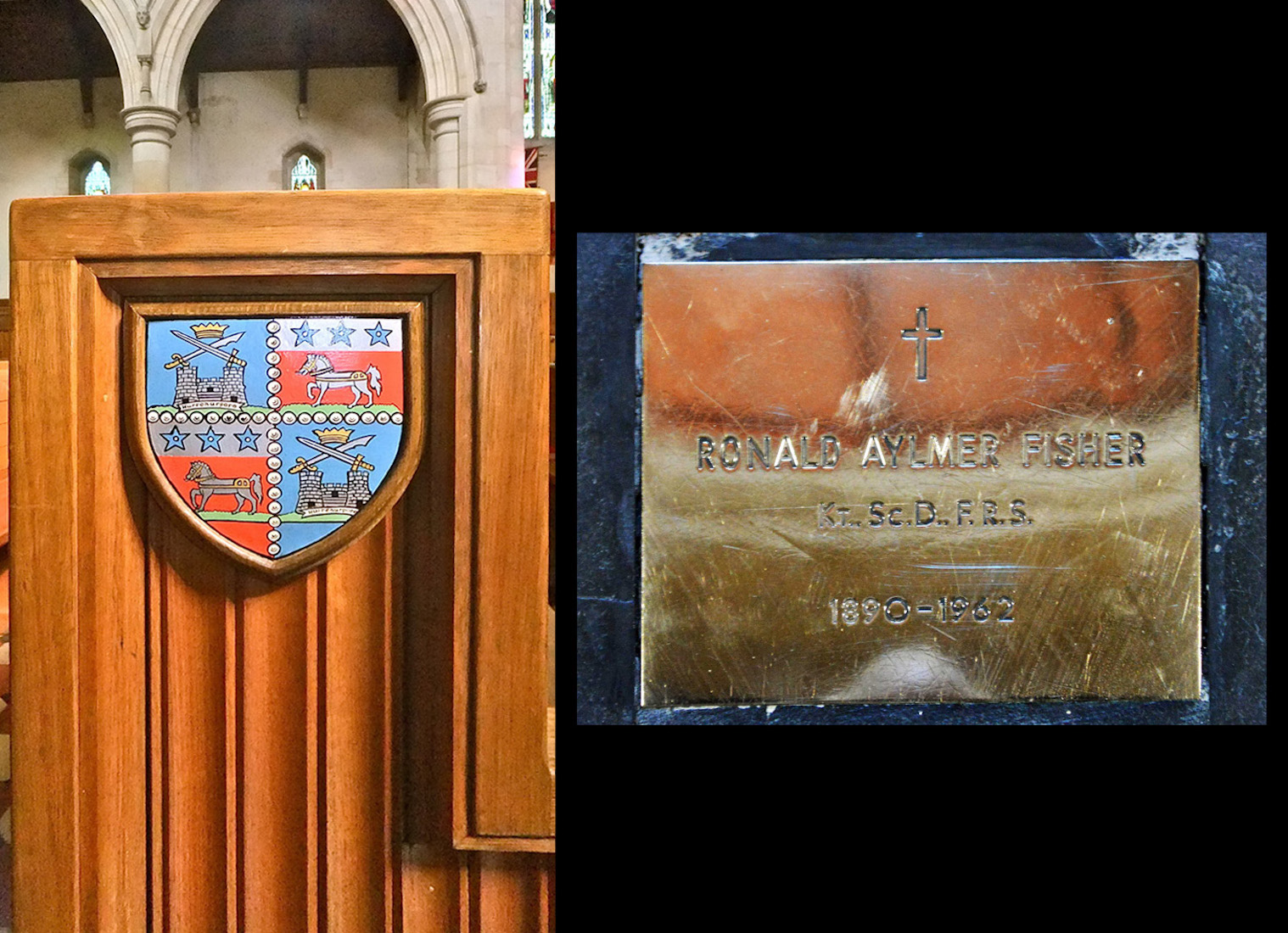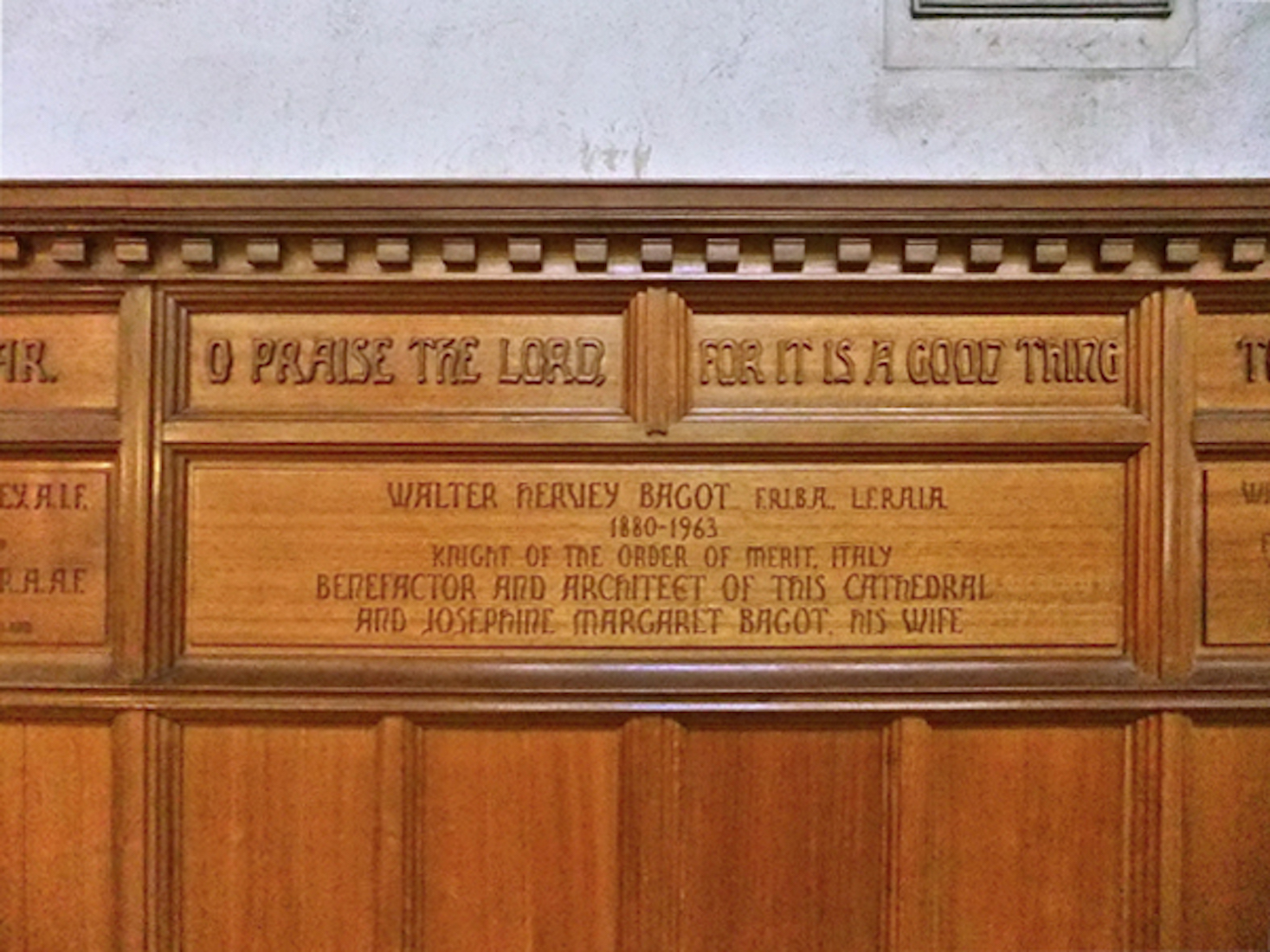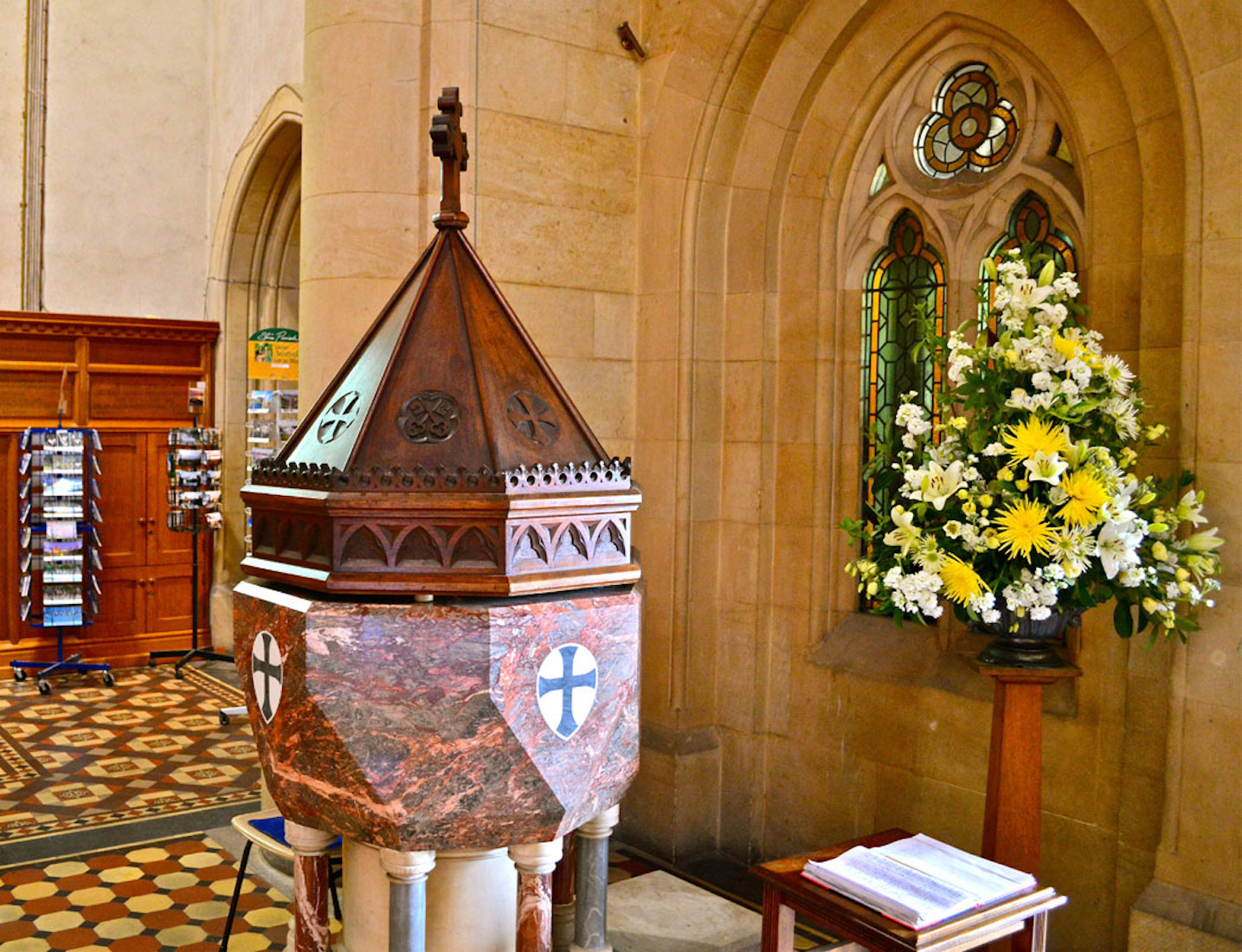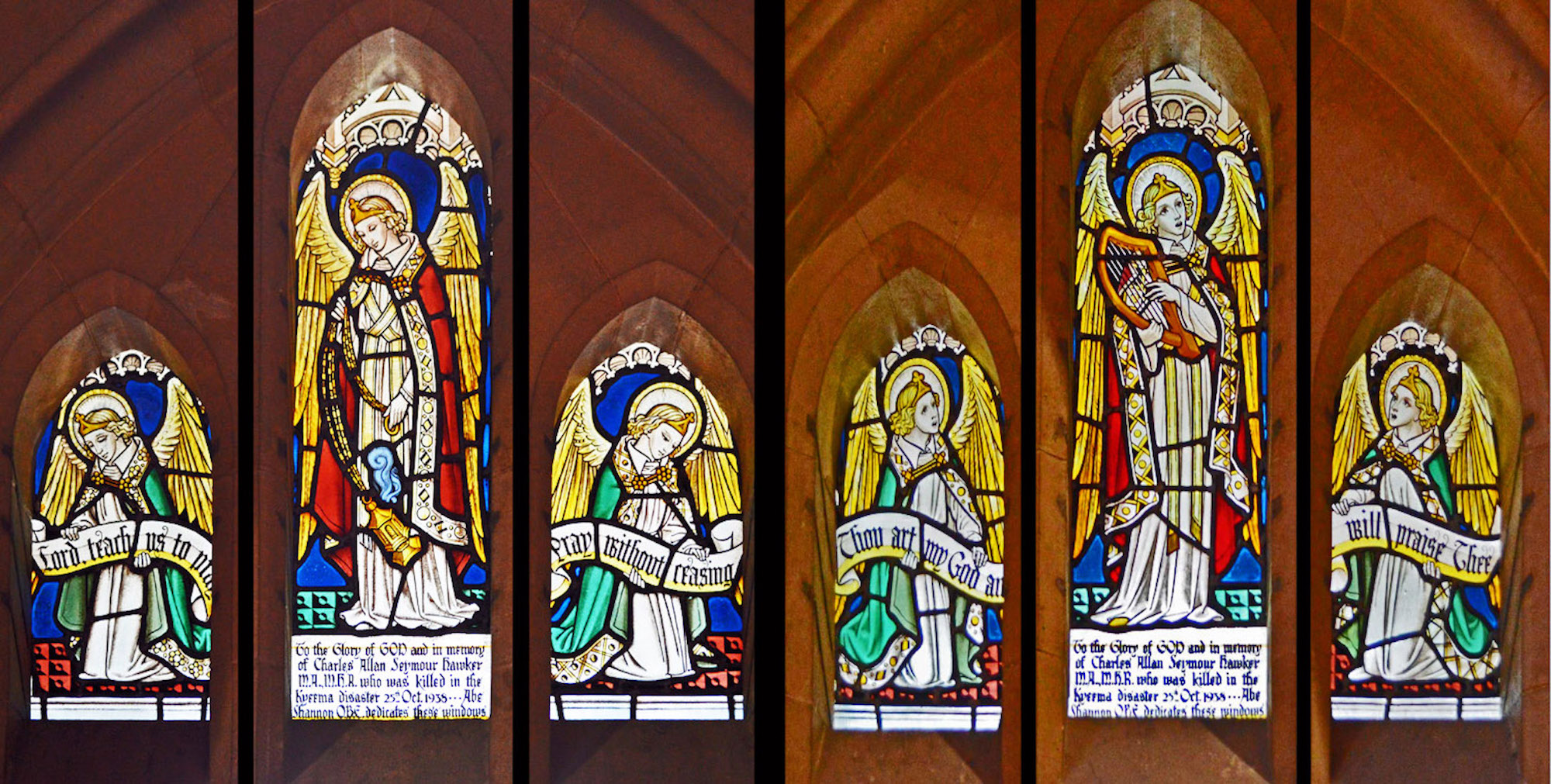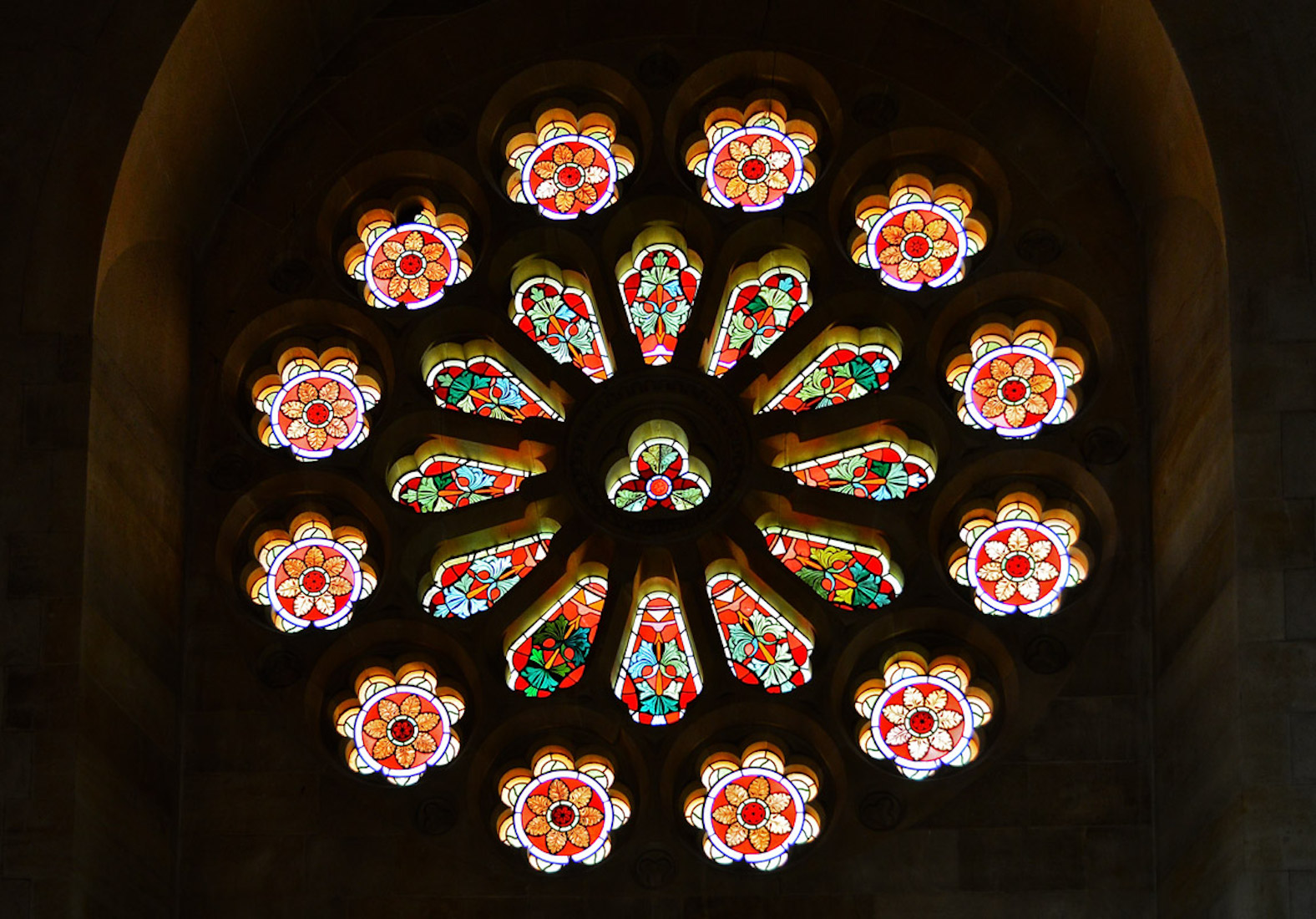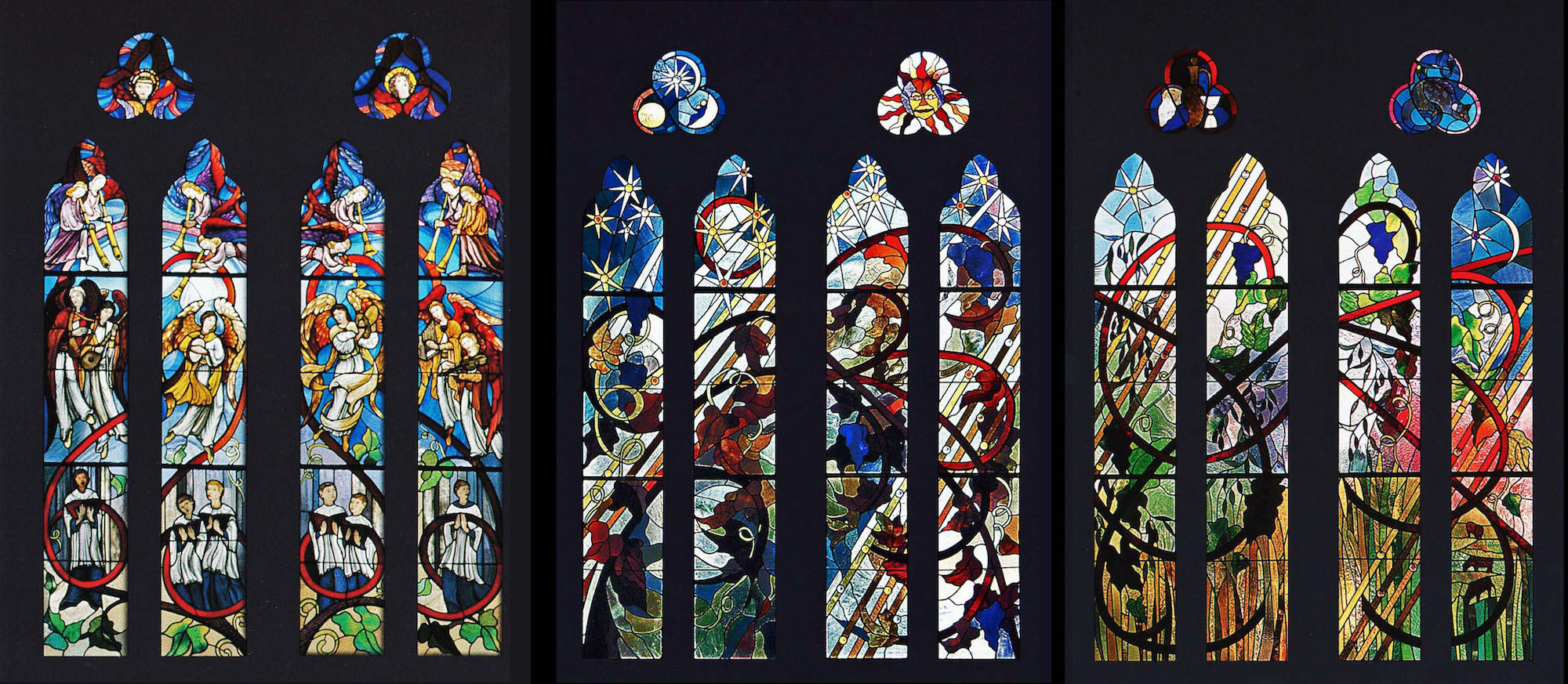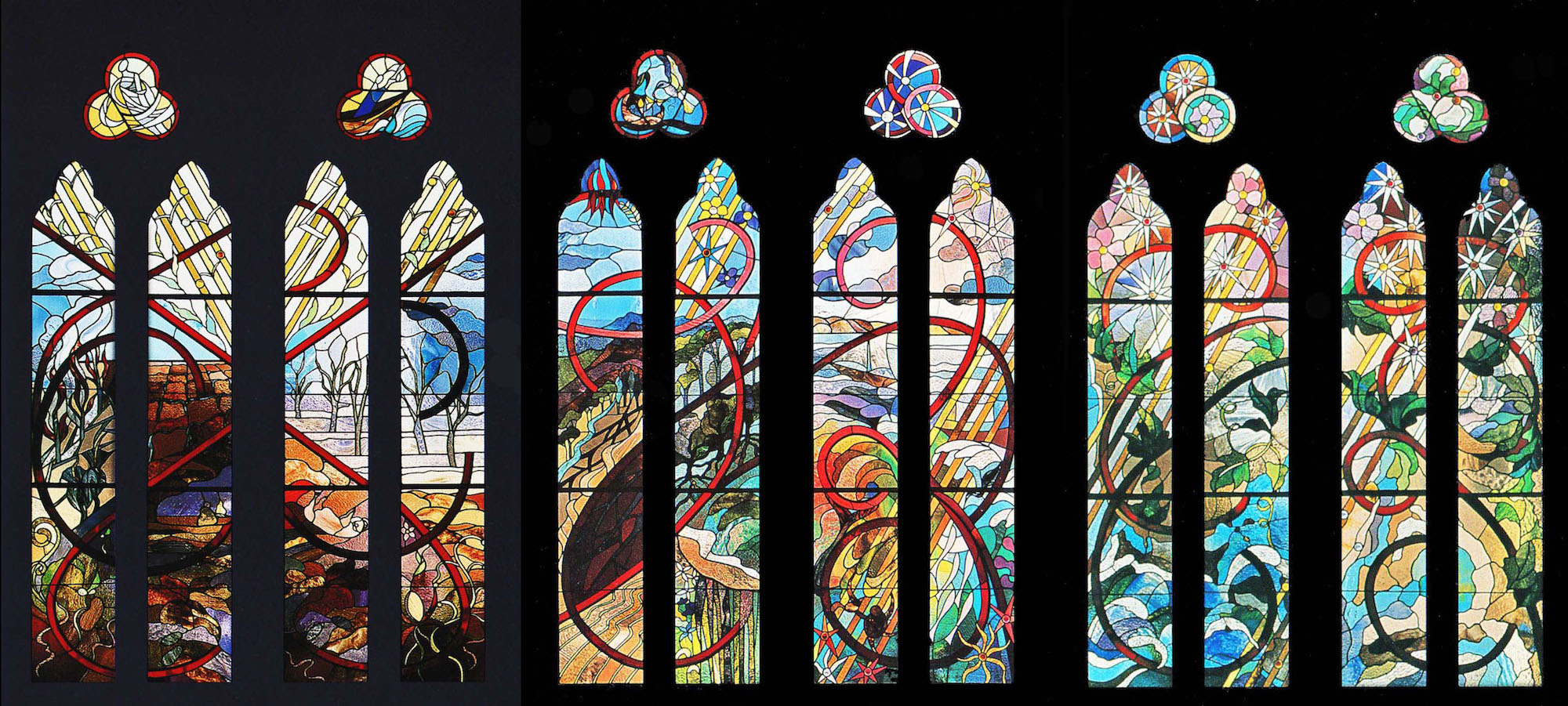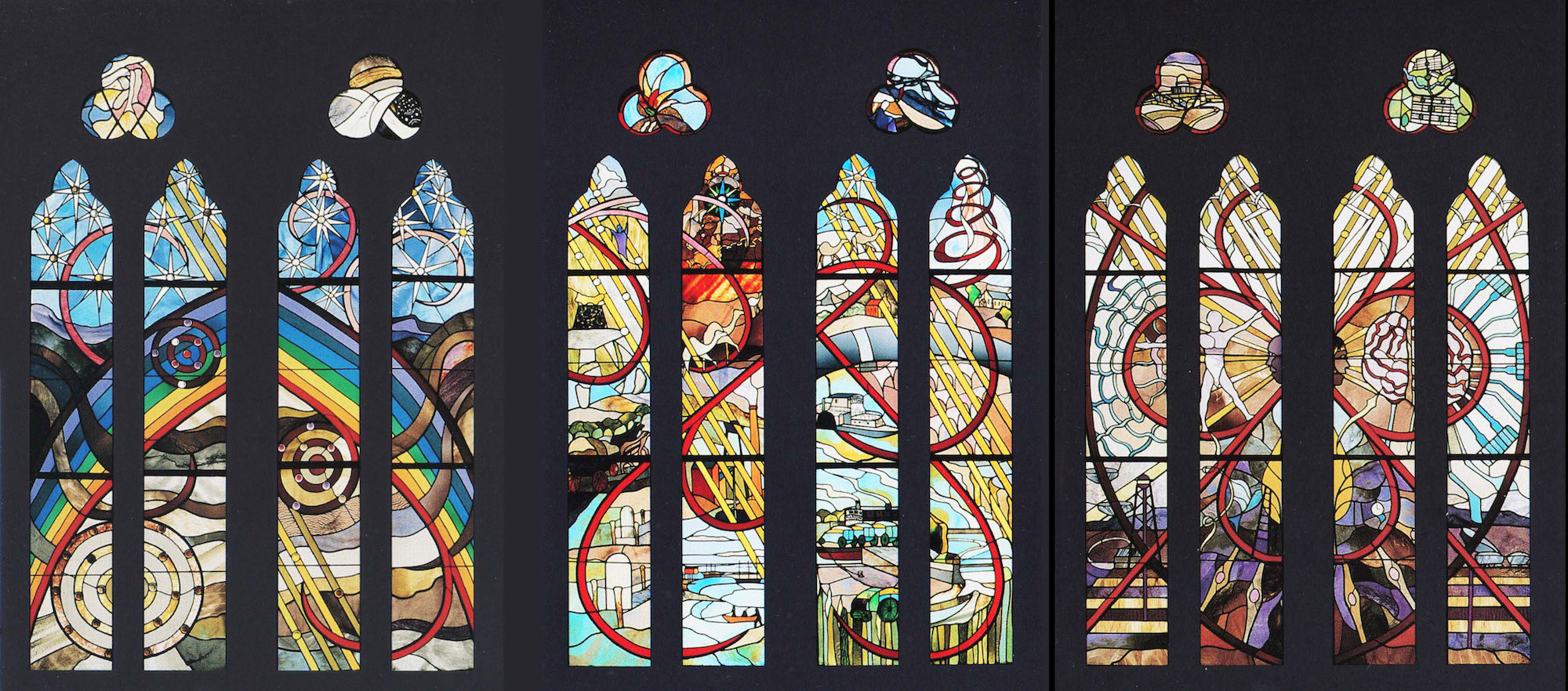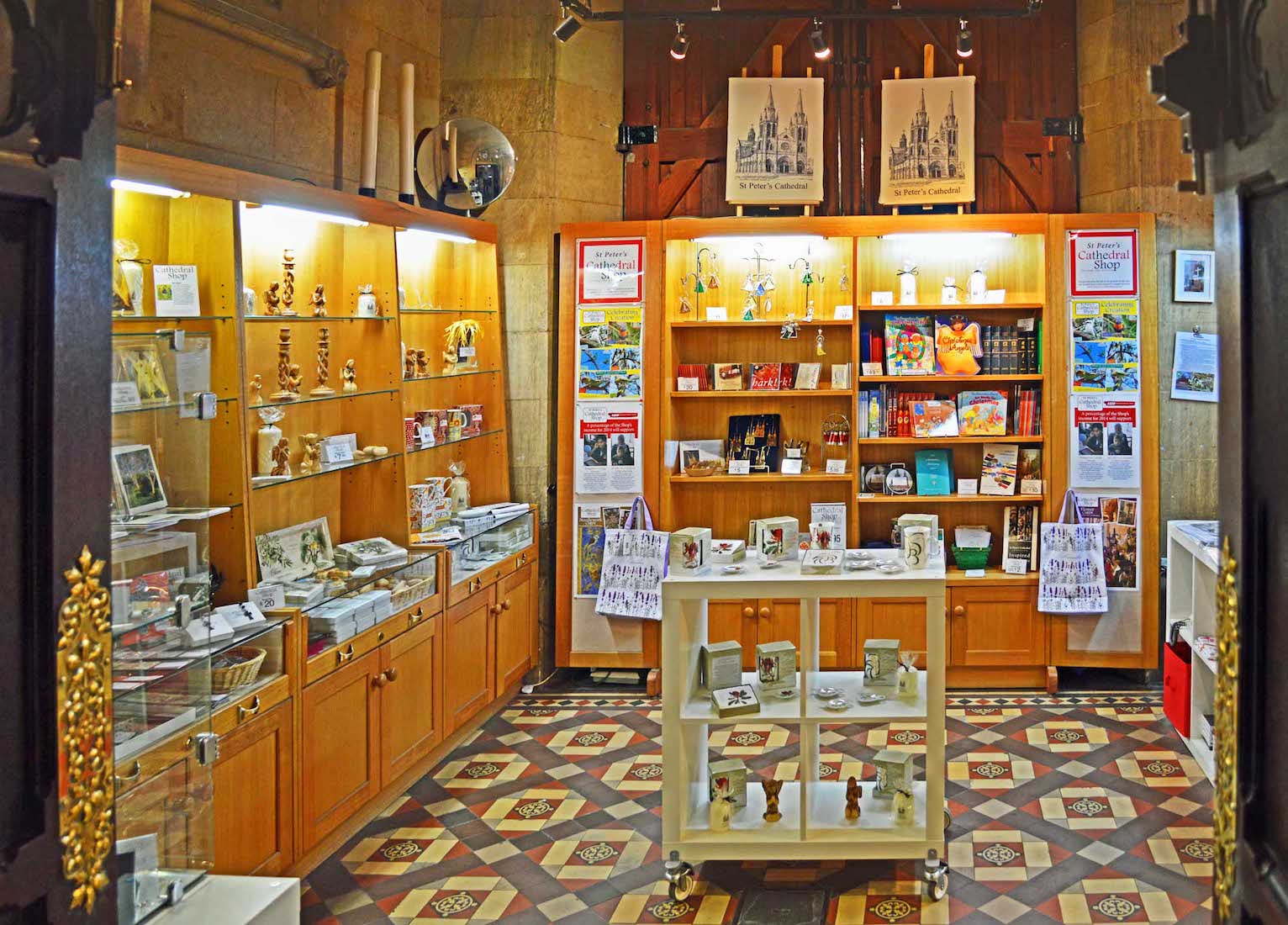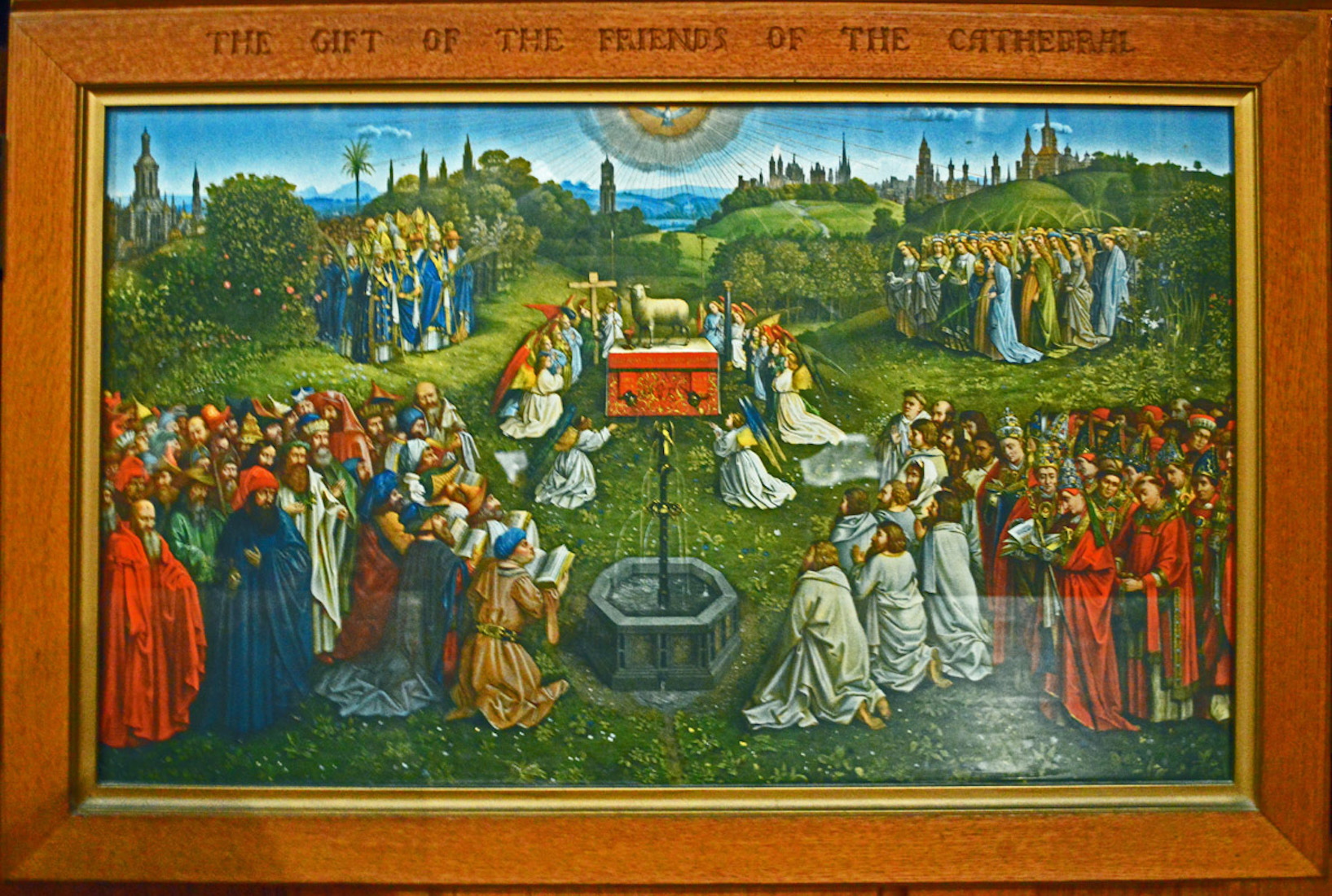
The main panel of the triptych is an illustration of Revelation 5: 12: In a loud voice they were saying: “Worthy is the Lamb, who was slain, to receive power and wealth and wisdom and strength and honor and glory and praise!” PLAN
62. HISTORIC NOTES
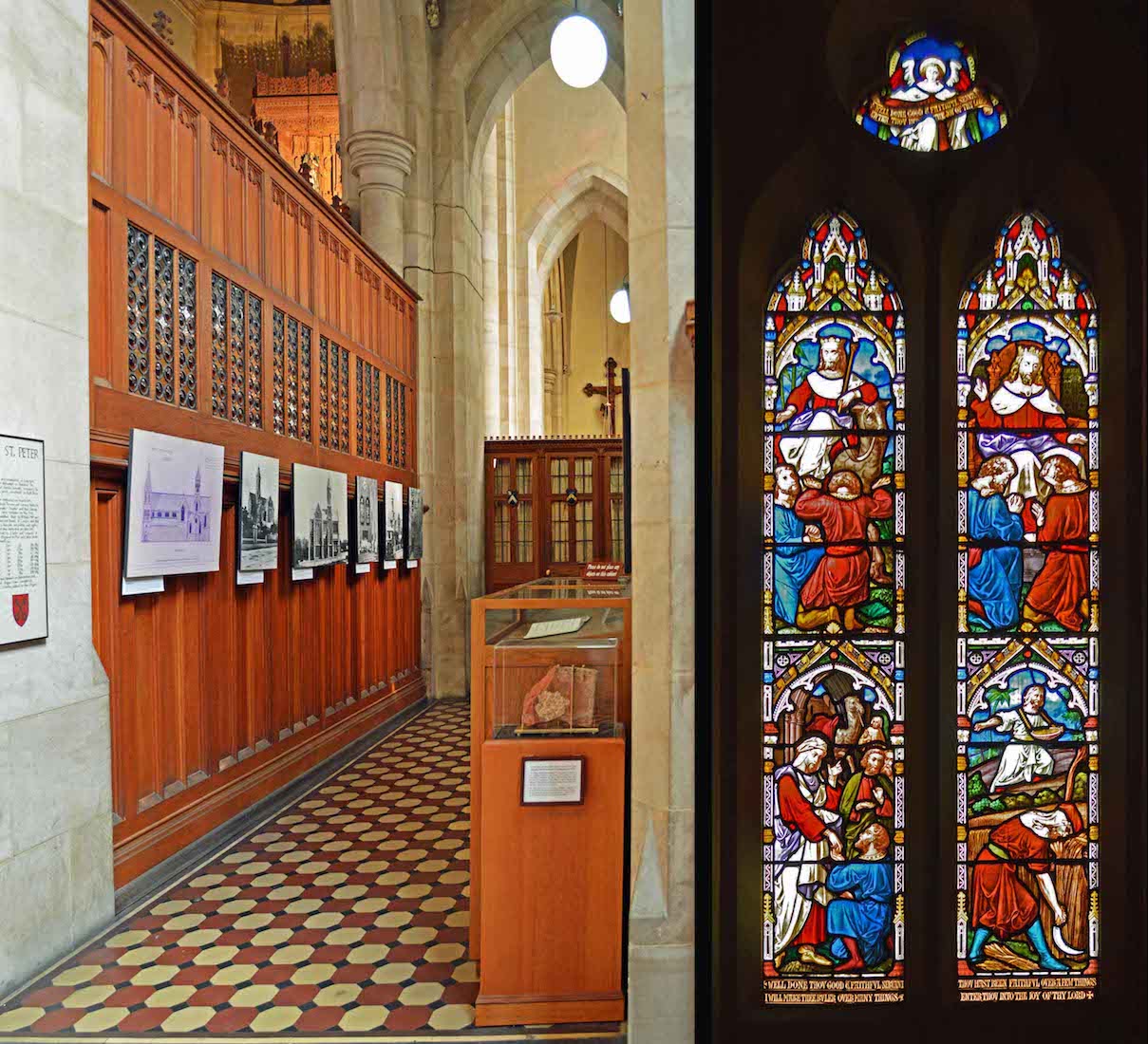
This aisle leads through to the sacristy, but is of special interest because of the historical photos with short explanations hanging here. In the foreground at right is the St Alban’s Brick, given to the Cathedral in 1998. The Cathedral had links with St Alban’s Church Keswick through parishioner Bruce Williams. The aisle window has theme ‘The good and faithful servant’ (Matthew 25:14). It was made by William Wailes in 1877, this window was erected in memory of Richard Bowen Colley.
63. IMPORTANT DATES
The first item to notice in this historic South aisle is this list of dates. In particular we note the laying of the foundation stone in 1869, the first service in 1876, and the building of the Lady Chapel – the last part of the Cathedral to be built – in 1904. The measurements of the Cathedral are also listed here.
64. NAVE EXTENSION
It is worth exploring the photographs of the historic South aisle. The initial stage of the Cathedral build was the sanctuary, chancel and transepts. This photograph shows the later building of the nave, and the temporary dividing wall.
65. ADDING THE NAVE
The nave was added in the latter part of the 19th century. I am always amazed at viewing the ‘modern’ enginerring techniques with metal scaffolding. If we return to the nave for a moment, we can see where the addition was made by looking at the ceiling panels. The six panels closest to the chancel have a different finish to the more Western panels.
66. BUILDING THE WEST FRONT
As the nave was completed, so the Western towers and spires were added. A magnificent construction!
67. FRAMED PAINTING
This unusual framed painting hangs in the South transept. It depicts St Peter holding a fish, and about to find a coin in its mouth!
68. THE MAGDALENE WINDOW
The Magdalene Window in the South Wall acknowledges and celebrates the role of women in the Scriptures, in the history of the Church, and in the forefront of social change in South Australia. It was designed by David Wright, a glass artist from Melbourne, who used the inspiration of Mary Magdalene and the women at the empty tomb for this spectacular window. It was installed in October 2001. A pamphlet outlining the design details of this window is available at the Cathedral.
69. CATHEDRAL MODEL
Nearby, against the South Wall, stands a glass case with a cut-away scale model of the Cathedral made with a scrollsaw. lt features the original architectural designs as well as the extra additions and extensive modifications showcasing the Gothic style splendour of the Cathedral. It was created by local scrollsaw artist Theo Kampes. It was entered in the Royal Adelaide Show in 2007, where it won both First Prize and Best Exhibit Awards in all Woodcraft classes. Visitors should look through the end rose window.
70. PEW CREST AND PLATE
In the 1960s the pews were replaced by family donations. The family name was placed on the back of the pew, the family crest at the outer end, and a diocesan crest by the centre aisle. The brass plate is set in the South aisle floor, towards the Magdalene window. Sir Ronald Aylmer Fisher FRS was a British statistician and geneticist. For his work in statistics, he has been described as "a genius who almost single-handedly created the foundations for modern statistical science" and "the single most important figure in 20th century statistics". He was born 17 February 1890 in East Finchley, London, United Kingdom, and died on 29 July 1962 in Adelaide.
71. EMBOSSED WALL PANELLING
Along the walls of the Nave there is a strip of embossed wooden panels. There is a continuous line of Scripture at the top, and below are various panels in memory of people who have been significant in the life of the Cathedral.
72. NAVE WINDOWS
These five windows in the nave South aisle were made by Charles Kemp and Co. of London between 1904 and 1909. They depict, from left, • St Augustine of Canterbury (d.c.605) • St Dunstan (c.909–988) • St Margaret of Scotland (c.1045–1093) • St Hugh of Lincoln (c.1140–1200), and • Bishop James Hannington (1847–1885).
74. KYEEMA DISASTER WINDOWS
Above the West doors are two sets of windows by an unknown maker installed in 1939 and dedicated to the memory of Charles Allen Seymour Hawker MA, MHR. He was killed in the Kyeema disaster on 25 October 1938 in which a plane bound from Adelaide crashed into Mount Dandenong east of Melbourne killing all on board. This was Australia’s first major air disaster.
75. WEST ROSE WINDOW
The design of the Rose Window in the West Wall is a near copy of 13th Century glass in the West Rose Window of Chartres Cathedral in France. It was made at the studios of Montgomery and Grimbley of Adelaide and Melbourne in 1901, and appears to be the work of two apprentices whose initials are scratched into the exterior lead cames. It was installed as part of the completion of the West end of the Cathedral in 1902.
76. SOUTH CLERESTORY WINDOWS I
In 1991 local artist Cedar Prest was commissioned to create a set of clerestory windows for the Cathedral. She used the imagery of vine and branches (John 15) to link the Christian message to the local area. Photos ##76, 77 show the windows on the South side as they appear high up in the chancel and nave. For the narrative, the windows should be viewed from right to left, starting with the right-hand windows of #76. • The left windows are above the Choir. Here we see choristers in Cathedral robes singing the offices, while above, angels with instruments mentioned in Psalm 150 add their heavenly harmonies. • The central windows illustrate Harvest: ‘You made the moon to mark the months; the sun knows the time for its setting. Psalm 104:19.’ • The right windows show Growth: You make the grass to grow for the cattle, and the plants to serve human need (Psalm 104:14).
77. SOUTH CLERESTORY WINDOWS II
From the left we have: • Death and Resurrection: The settlers discover the rigours of their new land – before there can be regeneration and new life, there must first be a kind of death. • The Arrival: Settlers cross the oceans seeking challenge and prosperity in a new land. • The Land: Before the invasion – the land is at peace with the elements and the tribes.
78. NORTH CLERESTORY WINDOWS I
Turning now to the North clerestory windows shown in ##77, 78, presented by Santos Ltd, we read these from the left. Here the old covenant is set against the new. From left: • The Promised Land: the cultural history of the land is celebrated in the telling of stories. • The Physical Journey: the new settlers journey towards the promise of industrial and agricultural prosperity even as Moses Journeyed towards the promised land. • The Spiritual Journey: a journey which has as its goal a new universality of God.
79. NORTH CLERESTORY WINDOWS II
From the left the sequence continues: • The New Covenant: ‘Love God and love your neighbour: the church reaches out.’ • The Message of Hope: Jesus heals all people – but the Church still has work to do to express his healing power in the world. • The windows at right are above the organ. These show modern musicians with bass and electric guitars, drums, guitar and mandolin, whistle, saxophone and trumpet.
80. CATHEDRAL SHOP
Off the South West corner of the nave is the attractive Cathedral shop with a wide range of items for sale. A good place to complete our tour of St Peter’s Cathedral!
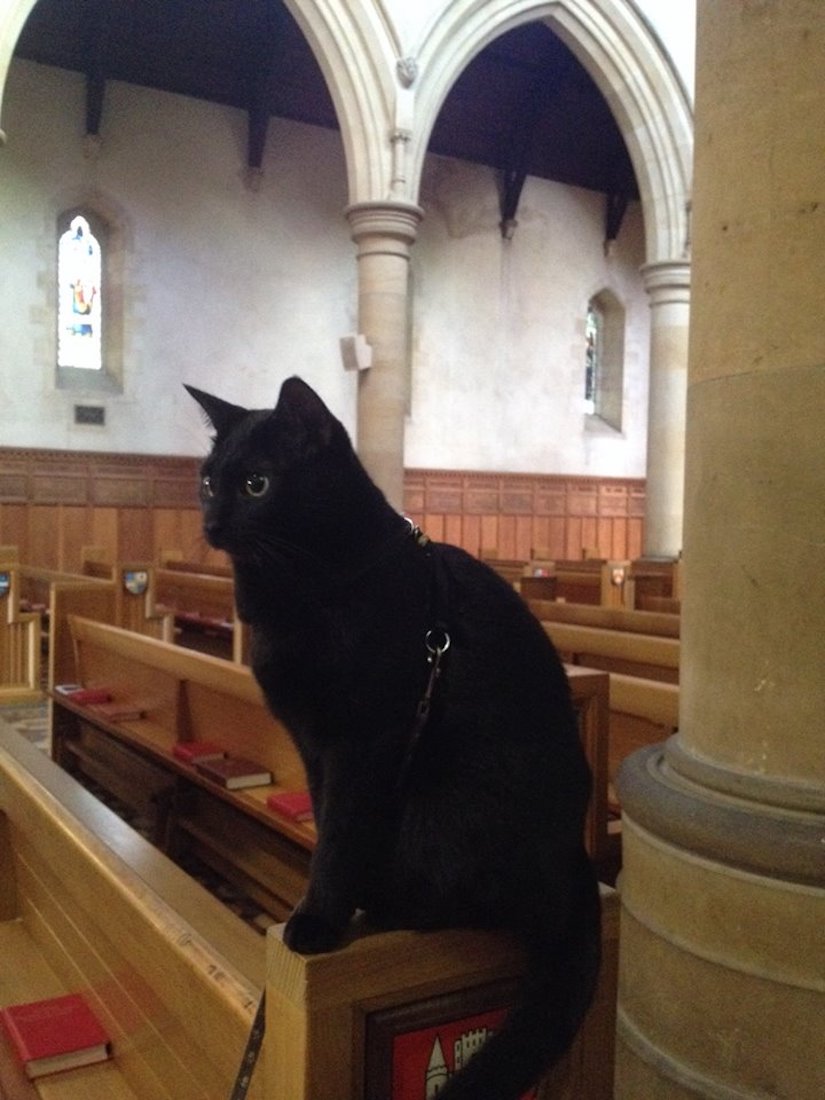
CONCLUSION
It is a great pleasure for me to share this experience of St Peter’s Cathedral – the Church we attend and have come to love.
This website is the second remake of an early site in my study of Australian cathedrals. It has been designed for general use, but with particular thought to being used on a mobile phone while actually visiting the Cathedral.
I am very happy to receive any corrections or constructive comments about this site: the best websites are those which have no errors! I am grateful to my wife Margie who has supported me in this project and done much valuable proof reading.
As usual, much of the text is not mine, but has been drawn in this case from the Cathedral Handbook, and the website
http://www.stpeters-cathedral.org.au
The photos are mine except where acknowledged, and in the case of the clerestory windows which come from the Cathedral booklet. My photographs which appear on this site can also be found in higher resolution at:
https://www.flickr.com/photos/paulscottinfo/sets/
Paul Scott Site created 07/ 2012 ; reformatted 04 / 2019 ; this version: 07 / 2020 .

